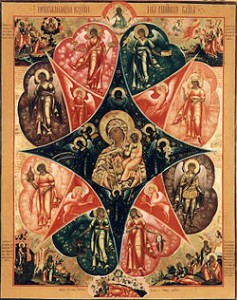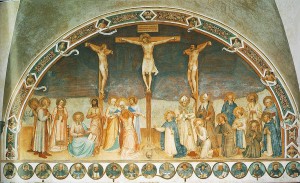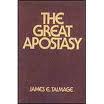I have long cherished the story of the Lord’s appearance to Moses in the Burning Bush from Exodus Chapter 3. I am sure you know the story. Moses left Egypt and set up his home in Midian. The Lord appeared to him in the midst of the burning bush in an effort to get his attention and call him back into His service to free the Children of Israel from the Egyptians. At first glance, the use of a burning bush appears to be nothing more than a tool to get Moses’ attention. It seems to be a way of saying, “Hey you! Pay attention! This is not just your run-of-the-mill conversation. I am serious!” However, I have to admit that in the back of my mind I have often wondered if there is a deeper meaning in the Lord’s choice of a bush that burns with fire yet remains unconsumed. It seems to be a very specific choice. So why did He choose it?
As some of you know, my wife and I have become catechumens in the Eastern Orthodox Church. As a result, I have spent some time this Christmas season reading the hymns of the Church as they relate to the birth of Christ, and I have come across an interpretation of the Burning Bush that has really intrigued me.
The Orthodox Church makes heavy use of typology, a method of exegesis that views older biblical events, places, and things as a foreshadow or prefiguration of later biblical events, places, and things. There is an ancient teaching that the burning bush is a Type of the Virgin Mary and the Church. The reasoning goes like this:
- God is referred to numerous times in the Bible as the Consuming Fire, e.g., Exodus 24:17, Deuteronomy 4:24, Deuteronomy 9:3, and Hebrews 12:29.
- Jesus and the Holy Spirit are both Fully God.
- The Burning Bush, despite the presence of the Lord, remained unconsumed.
- Mary, despite bearing Jesus in her womb, remained unconsumed.
- The Church, despite the indwelling of the Holy Spirit, also remains unconsumed.
I must admit that I never noticed this relationship before, but coming across it and pondering it has really touched my heart. Mary carried the All-Consuming fire in her womb, yet God condescended Himself enough so as not to consume her. Mary is, in many ways, the Unburnt Bush (this is a title given to her in Orthodox Tradition). Today, the Church has the All-Consuming fire living within it. God condescends Himself enough to take up residence in our hearts, yet we, like Mary, remain unconsumed. How glorious this is!
You showed Moses, O Christ God,
An image of your most pure Mother
In the bush that burned yet was not consumed,
For she herself was not consumed,
When she received in her womb the fire of divinity!
She remained incorrupt after her pure childbearing!
By her prayers, O greatly merciful One,
Deliver us from the flame of passions,
And preserve your people from all harm!
(Orthodox Kontakion Hymn)
Glory to Jesus Christ!




